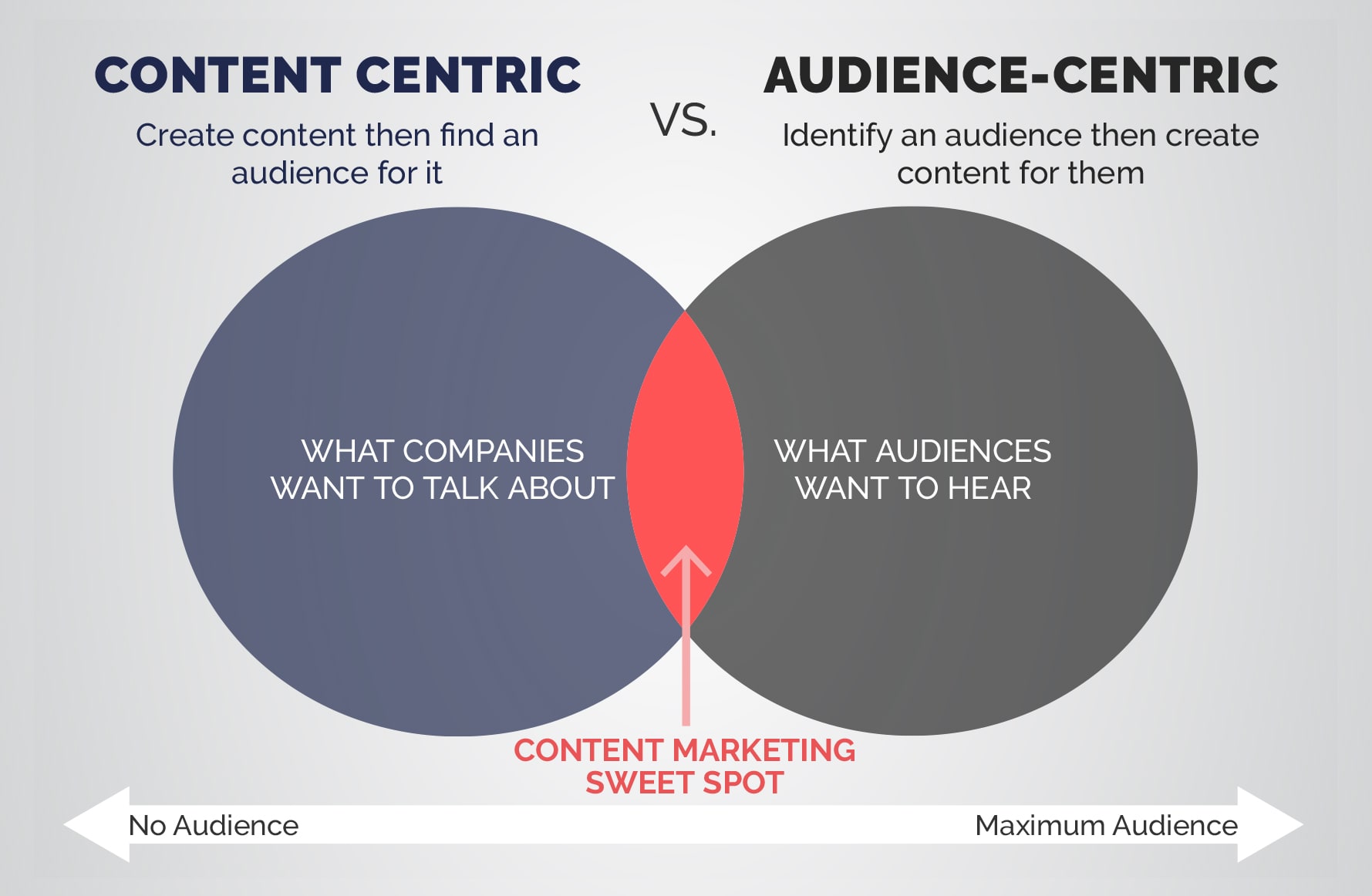First, a geological fact for you:
Turning carbon into diamond requires the equivalent pressure of 8,000lbs per square inch. That’s about the same as if the Eiffel Tower was turned upside down and the point was placed on one of your fingers.
That’s a lot of pressure.
But not as much pressure as I’m feeling right now writing a blog about how to write a perfect blog.
Actually this won’t necessarily show you how to write a perfect blog.
But it will show you how to write an effective blog. One that does what you need it to do. And the secret to that? Don’t write a blog. Design a blog.
Content design is answering a user need in the best possible way for the user to consume it and help them solve a problem.
And it isn’t just a technique to help you produce better content — it’s a new way of thinking about content.
The principles outlined here will result in content that’s more effective for both the reader and your organisation. They apply whether you are creating content yourself, or briefing an agency.
1. Start with the reader
Customer-centricity is a drum that we frequently bang at Yell. But for good reason.
If you don’t create something that your audience wants to read then they won’t read it. And then all the perfect prose and snappy subheads will be for nought.
As with all marketing, understanding your users and their needs is key. So before you brief an agency, or put pen to paper yourself, it’s important to be able to answer these questions:
- Who is your audience?
- What do they want to know?
- What do you want to tell them?
- What do you want them to do?
Of course, the bottom two questions aren’t 100% customer-centric. We’re realistic and know that all content is ultimately created in order to benefit the organisation that creates it.
But striking the balance between a prospect’s needs and the objectives of the organisation is key:

A good way to find this middle ground is to think about user stories, which require just three bits of information:
- As a [type of prospect]
- I want to [perform an action or find something out]
- So that I [can achieve my goal of…]
Here’s an example:
- As a new superfund member
- I want to understand how fees affect my balance
- So that I can make sure I’m making the most of my savings
The content that arises from this should be easy to plan.
2. Know what you want to blog to do
This is as important for an individual piece of content as it is for an omnichannel campaign. Knowing your objectives for your blog are key before you start to write it. Some objectives could be:
SEO
Are you hoping to receive organic traffic from Google? If so the format, structure and preparation will all need to be focused on achieving this before you type the first word. The aim is to create content that appeals to both Google and the human readers who will find your content through organic search.
Demonstrate knowledge or expertise
Some content is written to communicate a point of view or demonstrate that you, or your organisation, has knowledge and experience. These blogs can be more personal in tone, and are unlikely to generate organic traffic. However, if they’re good enough, or controversial enough, then they may generate traffic from being shared on social media.
Move people down the funnel
Part of inbound marketing is moving people from the top of the funnel (awareness) to the bottom (a conversion or sale). Targeted blog content can be a great way to move people towards a conversion by raising awareness of issues and then demonstrating that you can help with the solutions.
Promote a product
A lot of content produced by commercial organisations falls into this bucket, and much of it is ineffective. Most writers don’t do a good enough job of weaving product-focused messaging through educational information or storytelling. But product-focused blogs can be a good way to raise awareness of a product or service. The secret is to not write about the product, but to show how the product can help solve a specific user need.
So that’s stage two of writing an effective blog. Understanding what you actually want the blog to do, because it’s very hard to write a good blog that does all four of these things.
3. Research
It’s estimated that around 17.75 million blog posts are published every day. So unless you’re writing something completely proprietary to you or your business, it’s likely that someone else has already covered similar ground in the past.
Even if it’s an opinion piece, finding facts and figures that support your opinions and assertions can make an argument stronger.
Reading what’s already out there is useful for two main reasons:
- You can see how articles have been structured to present their arguments
- You can see what you don’t like and use it as inspiration to do better.
Tip: Once you’ve read what’s out there to get an idea, take notes in your own words and then don’t read the reference material again. Once you have read something in someone else’s words, it can be difficult to rewrite it in your own tone of voice.
4. Plan the structure
OK, so we know who we’re writing for, what we want the content to do and what else is out there, now we need to plan our article and argument. Rather than starting at the start and jumping straight into the intro, planning out a structure of the article through subheadings will allow you to organise your thoughts into a rationale structure that will lead your readers through your argument.
A great way to do this is just by listing subheadings with bullet points underneath them. By doing this you’ll be able to shift points round, ensure the flow is logical and that you cover all of the information you need.
For example, the subheads for this article are:
- Start with the reader
- Know what you want the blog to do
- Research
- Plan the structure
- Fill in the details
- Edit mercilessly
- Craft the headline
By planning this out in advance, actually writing the content was a doddle. At no point was I starting at a blinking cursor, wondering what to type next. I just had to follow the plan.
Subheads are great for a couple of other reasons too. The first is that Google loves them – it uses the H2 and H3 tags that websites assign to subheads to understand the content of the article.
The second is that readers love them too. Online readers scan, rather than read every article, so subheads break up the page and give people things to focus on.
If you’re working with an agency, then this can be a great place to check in with them to ensure that the content is inline with your expectations.
5. Fill in the details
Once the structure is complete, the next stage is to fill it in with content. This may sound overly simplistic, but if the previous four steps have been followed then this should be pretty straight forward. Some basic tips for writing effectively online:
- Keep sentences and paragraphs short. Attention is scarce and long, rambling sentences will mean your readers tune out.
- Use an active voice, rather than passive wherever possible.
- Think about how imagery can support your message. Again, this is to help those who scan.
- Write the intro and conclusion last – these will top and tail your content and need to first hook your reader in so that they read on, and then round out the blog with an effective summary, possibly including a call to actin.
6. Edit mercilessly
If you’re writing yourself, then a good target is to remove ¼ of the words from your original draft.
If you are working with an agency that has produced content that seems needlessly wordy then you are well within your rights to feedback that it should be shorter and snappier. A long, wordy blog is less likely to be read and is therefore not doing its job.
The Hemingway app is free software which analyses any text to ensure it is easy to read and communicating effectively. It’s like a video-gaming cheatcode and if you aren’t already using it, we definitely recommend you give it a try.
7. Craft the headline
Writing a good headline is one of the most difficult things about creating content. It needs to serve two purposes:
- Give some indication of what your article is about.
- Make the prospect want to at least check out your first paragraph.
It’s a delicate balance, and leaning on the science of human psychology. With that in mind, here are eight headline strategies that are backed by psychology:
- Surprise – “This Is Not a Perfect Blog Post (But It Could’ve Been)”
- Questions – “Do You Know How to Create the Perfect Blog Post?”
- Curiosity gap – “10 Ingredients in a Perfect Blog Post. Number 9 Is Impossible!”
- Negatives – “Never Write a Boring Blog Post Again”
- How to – “How to Create a Perfect Blog Post”
- Numbers – “10 Tips to Creating a Perfect Blog Post”
- Audience referencing – “For People on the Verge of Writing the Perfect Blog Post”
- Specificity – “The 6-Part Process to Getting Twice the Traffic to Your Blog Post”
Of course, some of these seem ‘clickbaity’.
But clickbait headlines became a thing for a reason – they leverage psychological principles to get results. And get results they do. After all – if your headline doesn’t encourage your target audience to read the article then all of the effort to create it is wasted.
It’s a good idea to think of several headlines and then see which you think works best. A second opinion can be helpful here to get an objective view on whether the balance between intriguing and informative is the right one.
That wraps up our blog on blogging. Whether you’re writing content yourself or briefing an agency, by following the tips and principles outlined here to design your content, rather than just write it, you should be able to ensure your content is clear, concise and effective in communicating your message.








